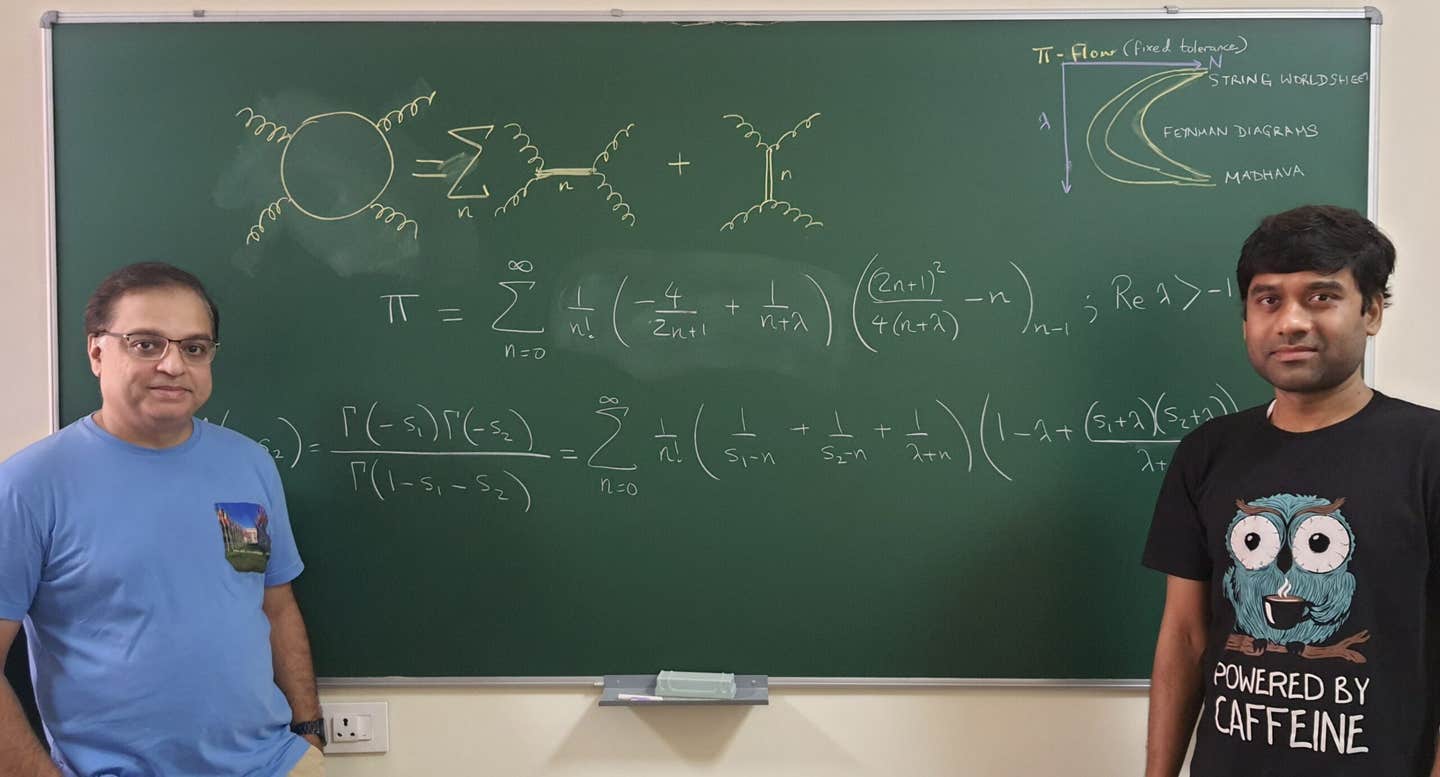Physicists discover a revolutionary new way to represent ‘pi’
Scientists at the Indian Institute of Science (IISc) have made an unexpected breakthrough in mathematics while exploring string theory.

Scientists at the Indian Institute of Science (IISc) have made an unexpected breakthrough in mathematics while exploring string theory. This new discovery offers a simplified way to represent the irrational number pi, particularly useful in understanding complex quantum processes like the scattering of high-energy particles.
The research, conducted by post-doctoral researcher Arnab Saha and Professor Aninda Sinha from the Centre for High Energy Physics (CHEP), was published in the prestigious journal Physical Review Letters.
Sinha explains, “Initially, our focus was not on pi. We were delving into high-energy physics within the realm of quantum theory to develop a model with fewer, more precise parameters to better understand particle interactions. Discovering a new perspective on pi was an exciting bonus.”
Sinha’s research group is deeply involved in string theory, which theorizes that all quantum phenomena are manifestations of different vibrational modes on a string. Their work particularly examines the interactions of high-energy particles, such as those seen in proton collisions at the Large Hadron Collider. They aim to represent these complex interactions with as few variables as possible, a task categorized as an “optimization problem.”
Modelling such processes is notoriously challenging due to the numerous factors that must be considered for each particle, including its mass, vibrations, and degrees of freedom in its movement. To tackle this, Saha and Sinha combined two advanced mathematical tools: the Euler-Beta Function and the Feynman Diagram.
The Euler-Beta Function, widely used in solving physics and engineering problems (including machine learning), and the Feynman Diagram, which illustrates energy exchanges during particle interactions, proved crucial in their approach. Together, these tools not only facilitated a more efficient model for explaining particle interactions but also led to a novel series representation of pi.
Related Stories:
In mathematics, a series is like a recipe that represents a parameter, such as pi, in its component form. Imagine pi as a dish; the series provides the ingredients and their proportions.
The challenge has always been to find the right combination of components to quickly approximate pi accurately. The series discovered by Sinha and Saha allows scientists to rapidly converge on the value of pi, which can then be applied in complex calculations, such as those involved in understanding high-energy particle scattering.
“Physicists and mathematicians have overlooked this until now because they lacked the necessary tools, which we have developed over the past three years through collaborative efforts,” Sinha notes. He adds, “In the early 1970s, researchers briefly explored this area but abandoned it due to its complexity.”
While these findings are currently theoretical, their potential for future practical applications is significant. Sinha draws a parallel to the work of Paul Dirac in 1928, who developed the mathematics describing electron motion and existence.
Although Dirac’s work was initially purely theoretical, it eventually led to the discovery of the positron and the development of Positron Emission Tomography (PET) scanners used in medical diagnostics.
Sinha reflects on the joy of theoretical research: “Doing this kind of work, although it may not have immediate practical applications, offers the pure pleasure of exploring theory for its own sake.”
This breakthrough not only deepens our understanding of pi but also highlights how abstract mathematical research can lead to profound insights and potential applications in the future.
As scientists continue to probe the mysteries of high-energy physics and string theory, discoveries like these remind us of the unexpected ways in which fundamental research can expand our knowledge and capabilities.
For more science and technology stories check out our New Discoveries section at The Brighter Side of News.
Note: Materials provided above by The Brighter Side of News. Content may be edited for style and length.
Like these kind of feel good stories? Get the Brighter Side of News' newsletter.
Joshua Shavit
Science & Technology Writer | AI and Robotics Reporter
Joshua Shavit is a Los Angeles-based science and technology writer with a passion for exploring the breakthroughs shaping the future. As a contributor to The Brighter Side of News, he focuses on positive and transformative advancements in AI, technology, physics, engineering, robotics and space science. Joshua is currently working towards a Bachelor of Science in Business Administration at the University of California, Berkeley. He combines his academic background with a talent for storytelling, making complex scientific discoveries engaging and accessible. His work highlights the innovators behind the ideas, bringing readers closer to the people driving progress.



